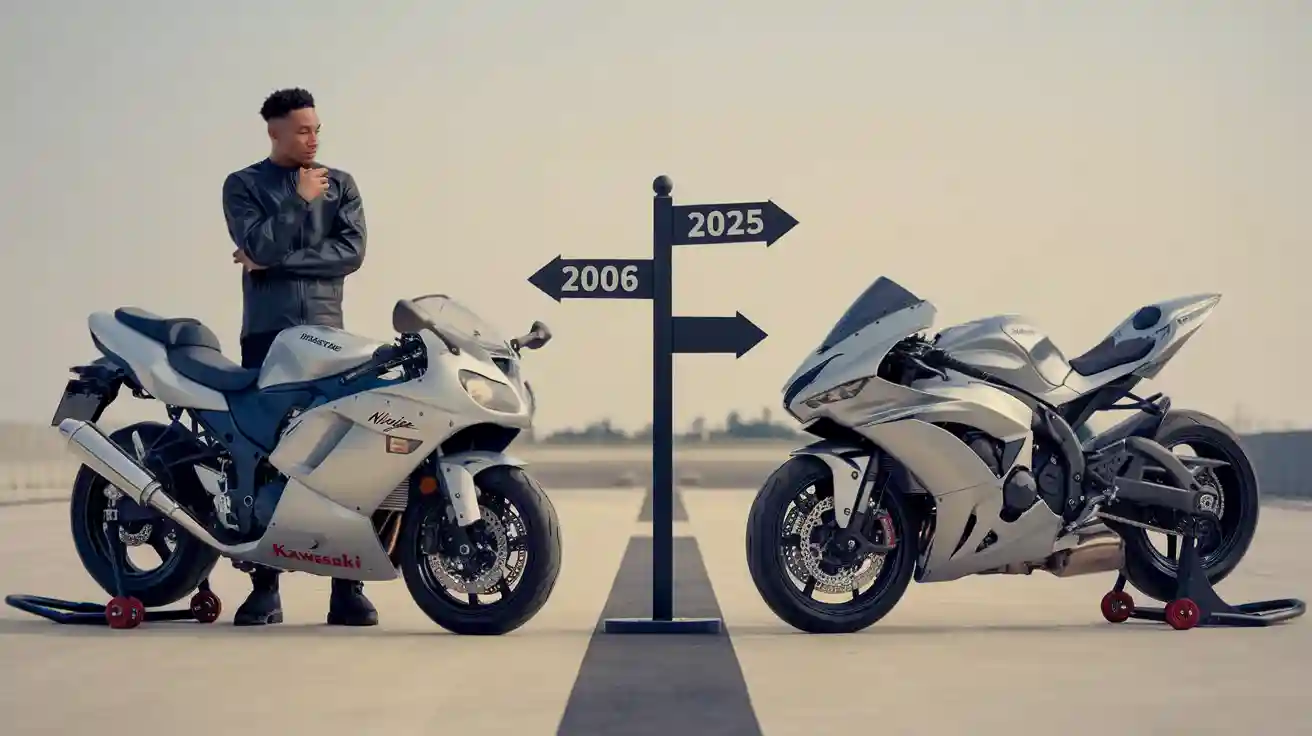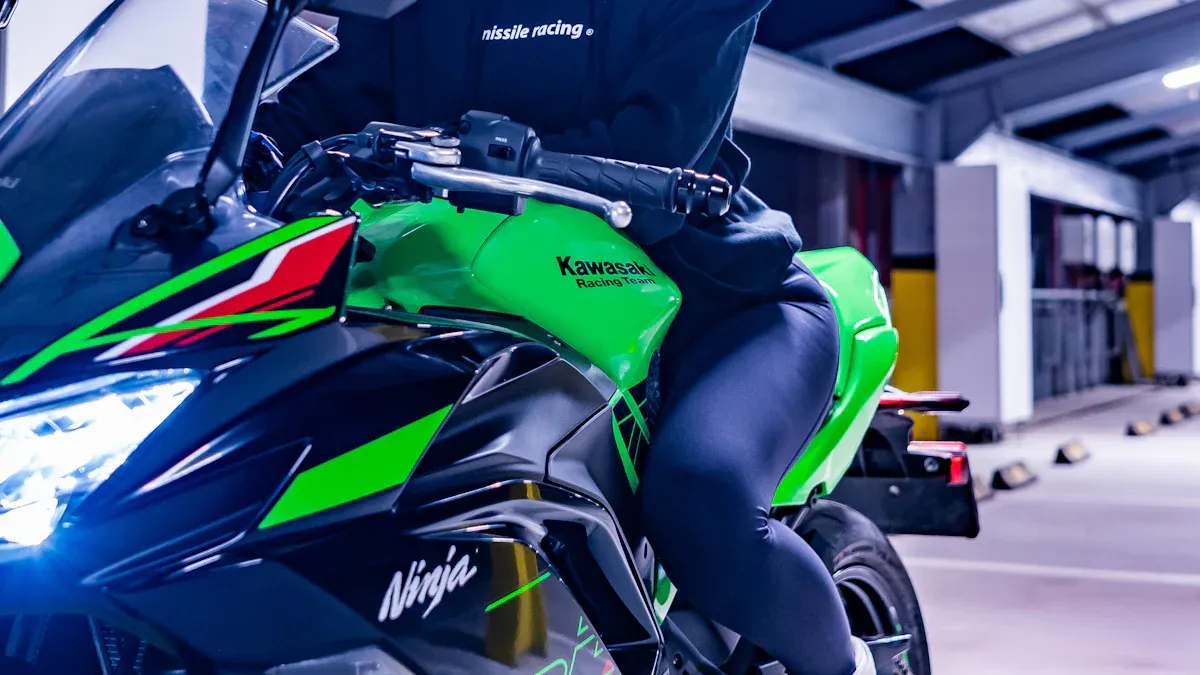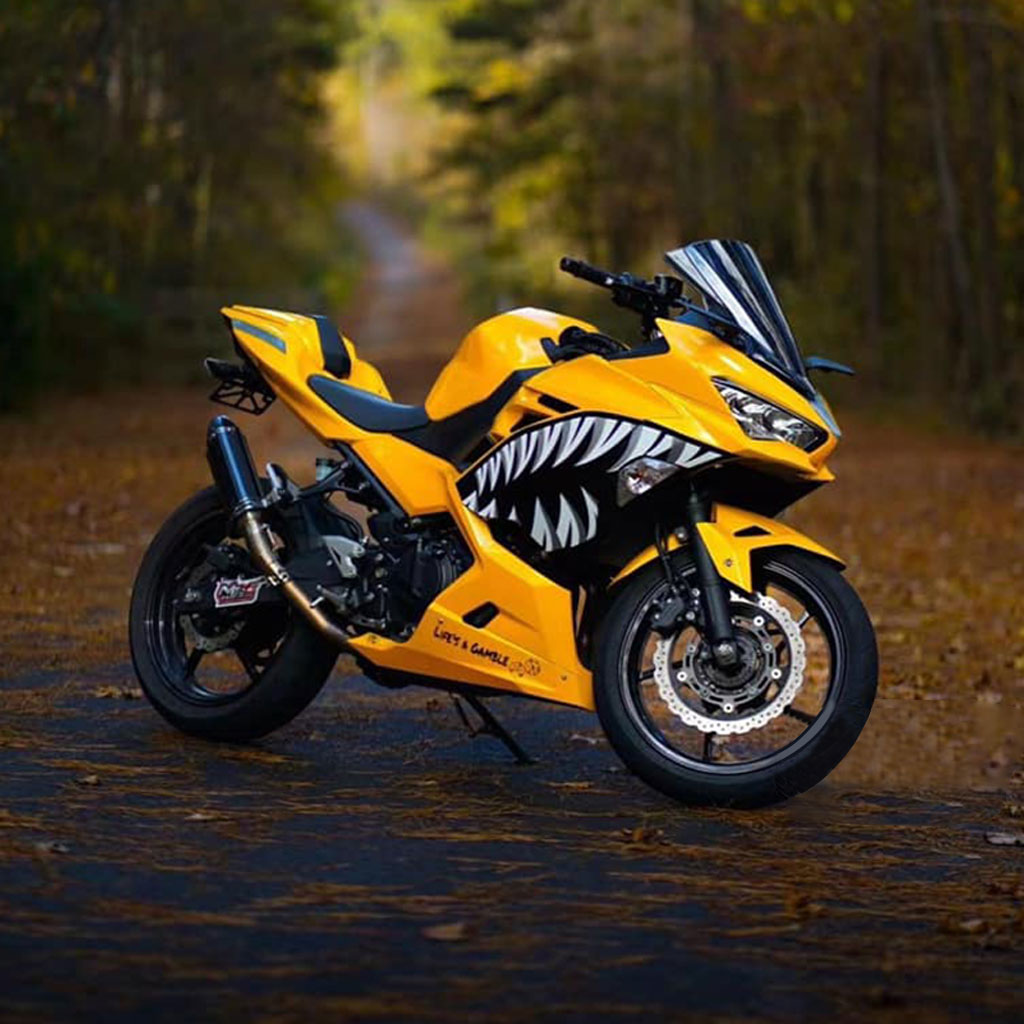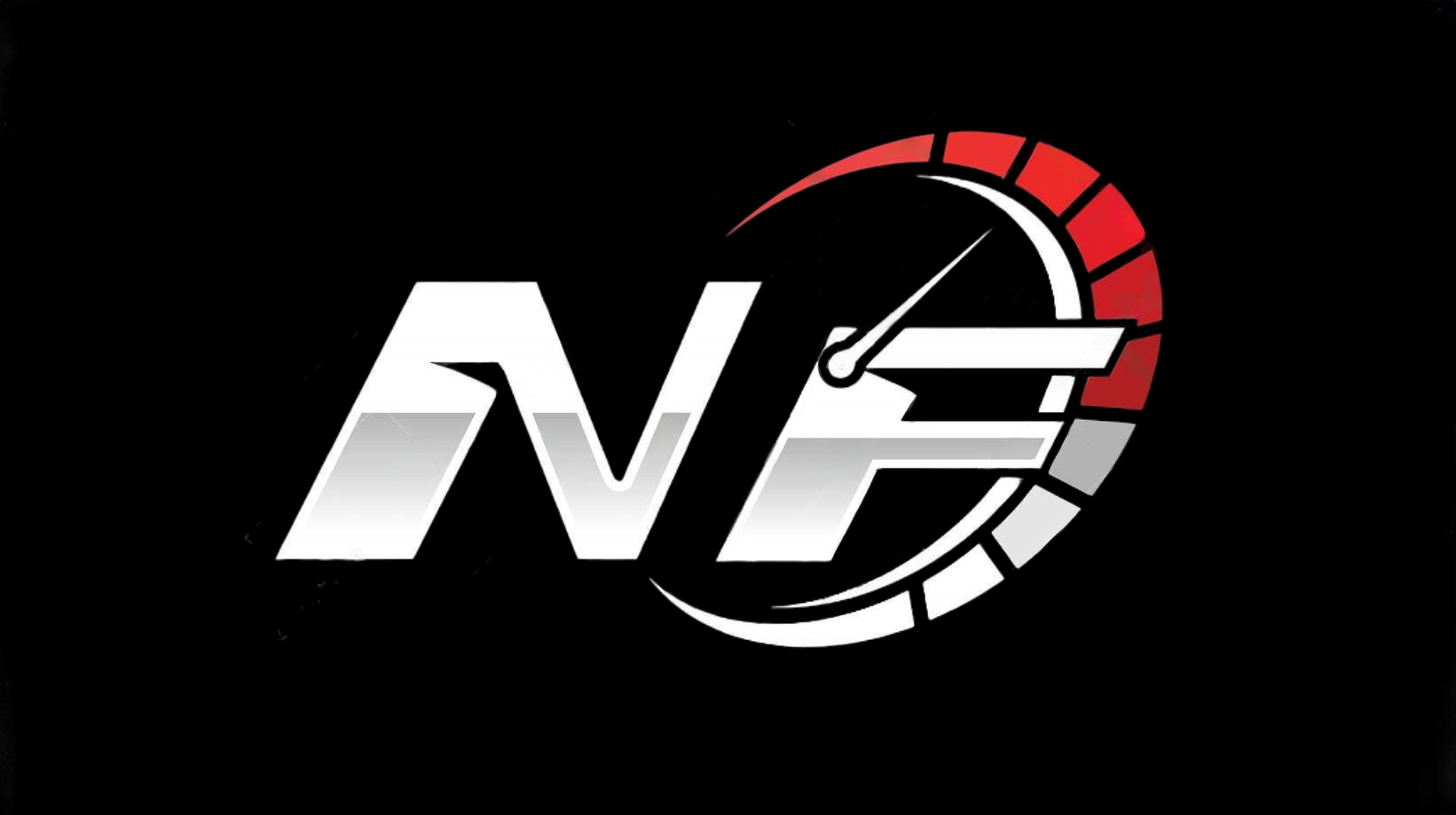2006 Kawasaki Ninja EX650R fans, should you switch in 2025?

If you ride a 2006 kawasaki ninja ex650r, you might wonder if the 2016 model gives you enough of a performance jump to make the switch in 2025. The kawasaki ninja has always stood out for its balance of performance and comfort. In this generation, you get changes in specifications, handling, and overall performance. You might want to upgrade if you crave better performance, modern specifications, or a fresh model feel. If your current sport bike still meets your riding needs and you love its specifications, sticking with your 2006 kawasaki ninja ex650r could be the smarter move.
2006 Kawasaki Ninja EX650R vs. 2016 Ninja 650R Performance
Engine and Power Delivery
When you compare the 2006 kawasaki ninja ex650r to the 2016 ninja 650r, you notice some interesting changes in engine specifications and power delivery. The 2006 model gives you about 65 horsepower at 9,000 rpm and 66 Nm of torque at 7,000 rpm. The 2016 ninja 650r bumps the power up a bit to 67 horsepower at 8,000 rpm, but torque drops slightly to 64 Nm at 6,700 rpm. Here’s a quick look:
| Model Year | Horsepower (hp) | Torque (Nm) | RPM (Horsepower) | RPM (Torque) |
|---|---|---|---|---|
| 2006 Ninja EX650R | 65 | 66 | 9000 | 7000 |
| 2016 Ninja 650R | 67 | 64 | 8000 | 6700 |
You get a little more power at lower revs with the newer model, which helps with everyday riding and track performance. Kawasaki updated the engine design over the years, adding new pistons, changing the exhaust, and improving the air box. These updates make the 2016 ninja 650r feel smoother and more refined. The engine also lasts longer and meets stricter emissions standards, so you get a high-performance motorcycle that’s built for the future.
Handling and Suspension
Handling is a big deal when you want strong track performance or just a fun ride on twisty roads. The 2006 kawasaki ninja ex650r uses a perimeter steel frame with a 41 mm telescopic fork and a side-mounted adjustable shock at the back. This setup gives you a good mix of comfort and sporty handling, making the bike easy to control in different situations. The ninja 650r keeps a similar suspension design through 2016, so you won’t see a huge jump in specifications here. Still, the overall ride feels a bit more stable and predictable on the newer model, especially if you push your sport bike harder during track performance sessions.
Tip: If you want the latest suspension technology, you might want to look at models after 2016, but for most riders, the 2016 ninja 650r offers solid performance and reliable handling.
Comfort and Ergonomics
Both the 2006 and 2016 ninja 650r models focus on comfort and accessibility. The seat height sits at about 31.1 inches, which is lower than many other sport bikes. You get an upright riding position, high handlebars, and footpegs that don’t force your legs too far back. This makes the kawasaki ninja 650r a great fit for riders of all sizes, especially if you’re on the shorter side. The riding posture helps you stay comfortable on longer rides and gives you confidence during track performance or city commutes. Kawasaki designed both models with comfort in mind, so you can enjoy the high-performance motorcycle feel without sacrificing everyday usability.
Technology and Rider Experience
When you hop on the 2016 ninja 650r, you notice a big jump in technology and rider experience compared to the 2006 kawasaki ninja ex650r. The newer model brings a lot of fresh features and updated specifications that make every ride smoother and more fun. Let’s break down what you get:
| Aspect | 2006 Kawasaki Ninja EX650R | 2016 Ninja 650R |
|---|---|---|
| Frame | Heavier beam backbone frame | Lighter, rigid steel trellis frame |
| Weight | Heavier overall | 42 pounds lighter |
| Ergonomics | Basic commuter setup | Sportier, more comfortable, adjustable levers |
| User Interface | Basic dash | Gear indicator, color-changing tach needle |
| Throttle/Clutch | Standard action | Light, smooth, easy for low-speed riding |
You feel the difference right away. The kawasaki ninja 650r uses a lighter frame and a rigid engine mount. This change gives you better feedback and sharper handling. The lighter weight makes the model easier to move around, especially at low speeds or in tight spaces. You get a sportier feel, but kawasaki keeps comfort in mind. The seat sits lower and the handlebars move forward, so you feel more in control. Riders with shorter inseams can flat-foot the bike, which boosts confidence.
The dash on the 2016 ninja 650r stands out. You see a gear indicator and a tachometer with a color-changing needle. These features help you shift at the right time and keep track of your performance. The layout feels user-friendly, so you don’t waste time searching for information. The clutch and throttle action feel light and smooth. This makes city riding and slow maneuvers much easier.
You also get more advanced specifications in the suspension. The rear shock uses a linkage for a more progressive feel. The lighter wheels help the model respond faster to your inputs. All these features work together to give you a high-performance ride that feels modern and refined.
Note: If you want a bike that feels up-to-date and gives you more control, the 2016 ninja 650r brings a lot of new features and specifications to the table. You get a better performance experience without losing the comfort you love.
Ninja 650R Reliability and Maintenance
Engine Longevity and Common Issues
When you look at the kawasaki Ninja 650R, you see a bike built for long-term performance. Many riders have pushed the 2006 model past 100,000 miles with very few problems. You can expect the engine to last if you follow the recommended maintenance and keep an eye on the specifications. Here are some common issues you might face with the 2006 kawasaki Ninja EX650R:
- Occasional valve adjustments needed to keep performance strong.
- Stator replacements, but these do not happen often.
- The stock suspension on the 2006 model feels basic, with no front adjustment and only rear preload adjustment.
- Brakes on the 2006 model are not as strong as newer bikes, which can affect performance in some situations.
The 2016 model does not have any major reliability issues reported. You get improved features and updated specifications that help the engine run smoother and last longer. This means you can focus more on riding and less on repairs.
Maintenance Costs and Intervals
You want a bike that keeps running without breaking the bank. Both the 2006 and 2016 kawasaki Ninja 650R models have clear maintenance schedules. Regular care helps you keep the performance and features at their best. Here’s a quick look at the main maintenance intervals:
| Maintenance Item | 2006 Model Interval | 2016 Model Interval |
|---|---|---|
| Oil and filter change | - | Every 7,500 miles |
| Spark plug replacement | - | Every 7,500 miles |
| Air filter replacement | - | Every 7,500 miles |
| Valve clearance check | - | Every 15,000 miles |
| Brake fluid change | - | Every 2 years |
| Coolant change | - | Every 3 years |
| Chain check/lubrication | Every 400 miles | Every 400 miles |
| Chain slack check/adjustment | Every 600 miles | Every 600 miles |
Tip: If you ride in dusty or rainy conditions, you should check and lubricate the chain more often. This keeps your bike’s performance and specifications in top shape.
Parts Availability and Support
You never want to wait long for parts when your bike needs attention. Good news—replacement parts for both the 2006 and 2016 kawasaki Ninja 650R are easy to find. Many parts and kits, like wheel bearings and seals, fit both model years. This means you can keep your bike’s features and specifications up to date without stress. You get strong support for both models, so you can focus on enjoying the performance and not worry about finding what you need.
Features and Modernization in the 2016 Ninja 650R

Safety Upgrades and Rider Aids
You want to feel safe when you ride, and the 2016 ninja 650r brings important safety features to help you. The biggest upgrade in this model is the option for ABS. This system helps you stop faster and keeps your wheels from locking up, even if you brake hard. You get better control and more confidence, especially in wet or slippery conditions. The ABS works with the Nissin two-piston calipers and petal-type discs, which boost your braking performance. The 2006 kawasaki ninja did not offer ABS, so this is a big step forward in safety specifications. Traction control is not part of the 2016 model, but the ABS alone makes a real difference in your daily rides. You can choose a non-ABS version, but most riders prefer the extra safety. This upgrade shows how kawasaki focuses on performance and rider protection in their newer models.
Instrumentation and Electronics
When you look at the dash on the 2016 ninja 650r, you see a big change from the 2006 model. The new digital cluster feels modern and sporty. You get a MotoGP-inspired multi-function display with a red backlight. This cluster shows you a fuel gauge, digital speedometer, clock, odometer, and dual trip meters. You can see your performance data at a glance. The bar-style digital tachometer helps you shift at the right time. The 2006 kawasaki ninja had a basic digital display with fewer features and less detail. The 2016 model also uses an advanced DFI system ECU, which controls sub-throttle valves for smoother throttle response. These electronic features make your ride easier and help you get the best performance from your bike. You spend less time guessing and more time enjoying the road.
| Feature | 2016 Ninja 650R | 2006 Ninja EX650R |
|---|---|---|
| Instrumentation Type | MotoGP-inspired digital cluster | Basic digital display |
| Display Elements | Fuel gauge, speedometer, clock, trip meters | Basic, less detailed |
| Electronic Control | DFI ECU with sub-throttle valves | Simpler system |
Design and Aesthetic Changes
You notice right away that the 2016 ninja 650r looks sharper and more aggressive than the older model. Kawasaki updated the bodywork to give the bike a sportier edge. The fairings fit tighter, and the lines look cleaner. The new model feels lighter and easier to handle, which boosts your performance on every ride. The seat sits lower, and the handlebars move forward, so you feel more in control. These changes are not just about looks—they improve your comfort and riding position. The wheels and frame also use lighter materials, which help the bike respond faster to your inputs. Every detail, from the headlights to the tail section, shows kawasaki’s focus on modern specifications and performance. You get a bike that stands out and feels fresh, with features that match your need for speed and style.
Ninja 650R Cost of Ownership
Purchase Price and Depreciation
When you look at the used market, you see a big difference in price between the 2006 and newer kawasaki models. The 2006 kawasaki EX650A6F Ninja 650R usually sells for about $2,025 in 2024. You might not find direct data for the 2016 model, but you can expect it to cost more since it has newer specifications and better performance. For comparison, a 2024 kawasaki EX650RRFNL Ninja 650 lists at $9,050. Here’s a quick table to help you see the price difference:
| Model Year | Model Name | Average Used Market Price (2024) |
|---|---|---|
| 2006 | Kawasaki EX650A6F Ninja 650R | $2,025 |
| 2016 | Kawasaki Ninja 650R | N/A |
| 2024 | Kawasaki EX650RRFNL Ninja 650 | $9,050 |
Depreciation hits older bikes less. If you buy a 2006 model, you lose less money over time. The 2016 model will still drop in value, but not as fast as a brand-new bike. You get more modern specifications and performance, but you pay more up front.
Insurance and Registration
Insurance and registration costs can change how much you spend each year. For the 2006 kawasaki Ninja EX650R, insurance usually costs between $300 and $500 per year if you have a normal risk profile. Registration in Quebec is about $580. If you have a high-risk profile, insurance can jump to $1,250 and registration to $1,400. The 2016 model often costs more to insure. Some quotes show $500 to $1,800 for just six months, depending on your insurer and riding history. Here’s a table to break it down:
| Model & Year | Insurance Cost (USD) | Registration Cost (CAD) | Notes |
|---|---|---|---|
| 2006 Kawasaki Ninja EX650R | $300 - $500 annually | ~$580 typical in Quebec | $1,250 insurance for high-risk cases; $1,400 registration for high-risk motorcycles |
| 2016 Kawasaki Ninja 650R | $500 - $1,800 for 6 months | Not stated, likely similar or higher | Insurance higher than 2006; varies by insurer and rider history |
Tip: Always check with your local insurance agent. Your age, riding record, and location can change your costs a lot.
Long-Term Value
You want a bike that gives you good performance and keeps its value. The 2006 model costs less to buy and does not lose much value each year. You get solid specifications and reliable performance for a low price. The 2016 model gives you better performance, more modern specifications, and extra features. You pay more, but you also get a bike that feels newer and lasts longer. Both models offer good fuel economy, so you save money at the pump. If you want the latest performance and specifications, the 2016 model is a smart pick. If you want to save money and still enjoy strong performance, the 2006 model works well.
Who Should Upgrade from the 2006 Kawasaki Ninja EX650R?
Rider Profiles That Benefit Most
You might wonder if you fit the profile of someone who should upgrade to the 2016 model. If you crave the latest technology and want your ride to feel modern, the newer model could be a great fit. Riders who value advanced safety features, like ABS brakes, will notice a big difference in confidence, especially when riding in the rain or on busy streets. The 2016 model brings updated specifications that make every ride smoother and more enjoyable. You get a lighter frame, sharper handling, and a dash that shows you more information at a glance. If you often push your bike’s performance on twisty roads or even at the track, you will appreciate the improved suspension and lighter wheels. These changes help you get the most out of every ride.
Some riders want a bike that feels fresh and stands out. The 2016 model has a sharper look and a more aggressive design. If you care about style and want your motorcycle to turn heads, this model delivers. You also get a more refined engine with smoother power delivery. This means you can enjoy better performance without losing comfort. If you ride long distances or spend a lot of time in the saddle, the improved ergonomics and lower seat height will help you stay comfortable. Riders who want the latest specifications, better performance, and a modern feel will benefit most from upgrading.
Tip: If you ride in heavy traffic, value safety, or want a bike that feels new, the 2016 model offers a big step up in both performance and specifications.
When Sticking With the 2006 Makes Sense
You might not need to upgrade if your 2006 kawasaki ninja ex650r still meets your needs. This model uses the same reliable 649 cc, liquid-cooled, 4-stroke parallel twin engine as later models. You get dependable performance and a strong build that can last for years. Many riders keep their bikes running smoothly by following the recommended maintenance and using quality parts. The 2006 kawasaki ninja ex650r gives you a comfortable and versatile riding position. You can handle city traffic or enjoy a weekend ride on country roads without any trouble.
If you care about cost-effectiveness, the 2006 model shines. You can boost your bike’s performance with affordable upgrades. For example, you can install a K&N reusable air filter or a new exhaust system. These changes improve your specifications and give you a more exciting ride without the cost of a new motorcycle. The wide range of aftermarket accessories lets you customize your bike’s performance, protection, and style. You can add engine guards, windshields, or luggage carriers to match your needs. This flexibility makes the 2006 kawasaki ninja ex650r a smart choice if you want to save money and still enjoy strong performance.
You also avoid the higher insurance and registration costs that come with newer models. The 2006 model holds its value well and does not lose much over time. If you like working on your bike, you will find parts easy to get and maintenance simple. The specifications of the 2006 kawasaki ninja ex650r remain practical and reliable, even as newer models come out.
Note: If you want a bike that is easy to maintain, reliable, and affordable to upgrade, sticking with your 2006 kawasaki ninja ex650r makes a lot of sense. You get solid performance and specifications without the extra cost.
Here’s a quick table to help you decide:
| You Should Upgrade If... | You Should Stick With the 2006 If... |
|---|---|
| You want ABS and modern safety features | You value cost-effectiveness and reliability |
| You crave the latest specifications | You enjoy customizing with aftermarket parts |
| You want sharper handling and lighter weight | You prefer simple maintenance and easy parts |
| You ride often in heavy traffic or rain | You like the classic design and comfort |
| You want a fresh, aggressive look | You want to avoid higher insurance costs |
No matter what you choose, both models offer strong performance and practical specifications. Think about what matters most to you—whether it’s the latest features or a bike that’s easy to own and upgrade.
You face a big choice between the 2006 kawasaki ninja ex650r and the 2016 ninja 650r. The 2016 model gives you better performance, lighter weight, and new specifications. You get more comfort and safety. The older model still offers strong performance and easy maintenance. If you want the latest specifications and a fresh ride, upgrade. If you love simple maintenance and solid performance, keep your current model. Check your riding needs, compare specifications, and test both models. Your best performance comes from the right fit.
FAQ
What makes the 2016 Ninja 650R feel faster than the 2006 model?
You notice the 2016 Ninja 650R feels quicker because it weighs less and has a smoother engine. The lighter frame and better throttle response boost your performance, especially when you ride in the city or on twisty roads.
Can you improve the performance of your 2006 Kawasaki Ninja EX650R?
Yes! You can add a new exhaust, upgrade the air filter, or change the tires. These simple upgrades help you get more performance out of your bike without spending a lot of money.
Is the 2016 Ninja 650R better for daily commuting?
You get a more comfortable seat and better fuel economy with the 2016 model. The improved ergonomics and lighter weight make your daily ride easier. You also enjoy better performance in stop-and-go traffic.
How does ABS affect performance and safety?
ABS helps you stop faster and keeps your wheels from locking up. You feel more confident, especially in the rain. This safety feature improves your overall performance and makes every ride safer.
Which model is easier to maintain for strong performance?
| Model Year | Maintenance Level | Performance Upgrades | |--|--|--| | 2006 | Simple | Many options | | 2016 | Slightly advanced | Fewer needed |
You find the 2006 model easier to work on at home. Both models let you keep strong performance with regular care.
See Also
Detailed 2025 Analysis Of The Kawasaki Ninja H2R
Reasons Kawasaki ZX10RR Beats ZX10R In 2025
Top Six Stylish Motorcycles Perfect For New Riders 2025

